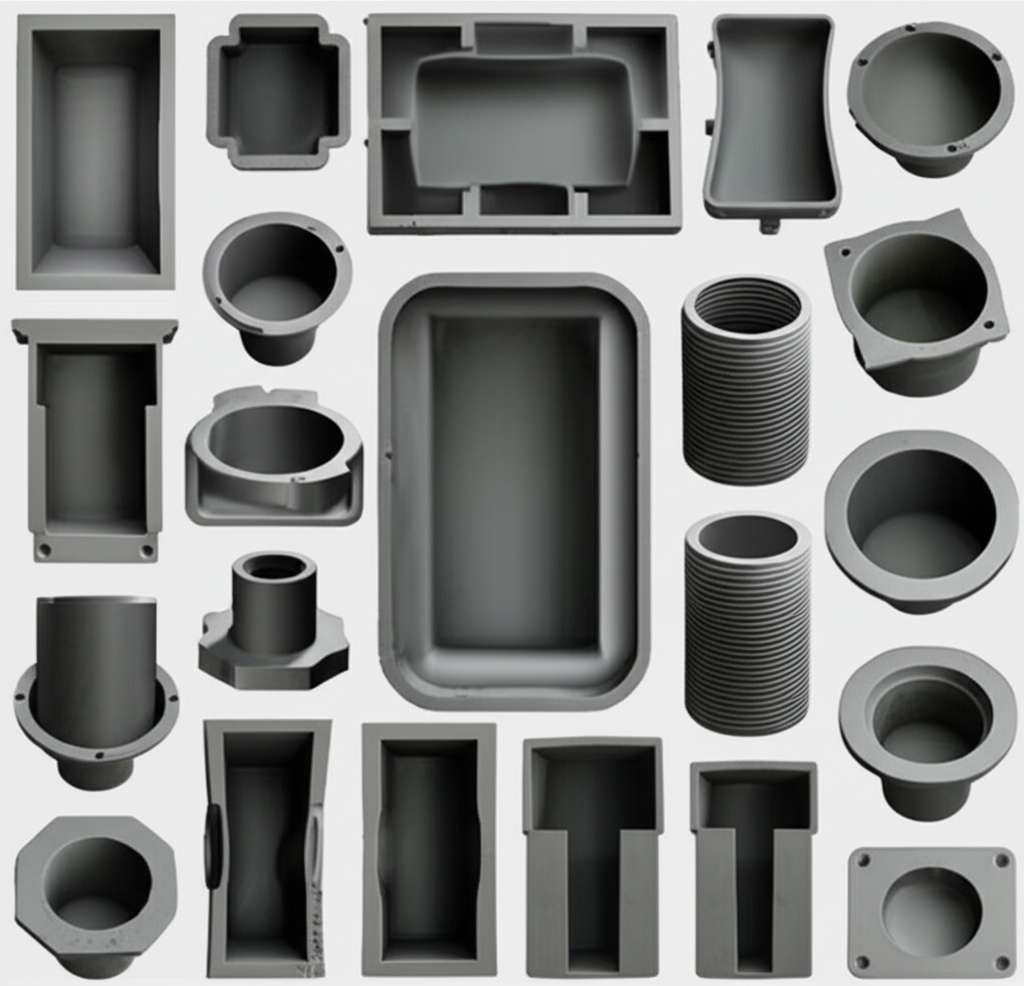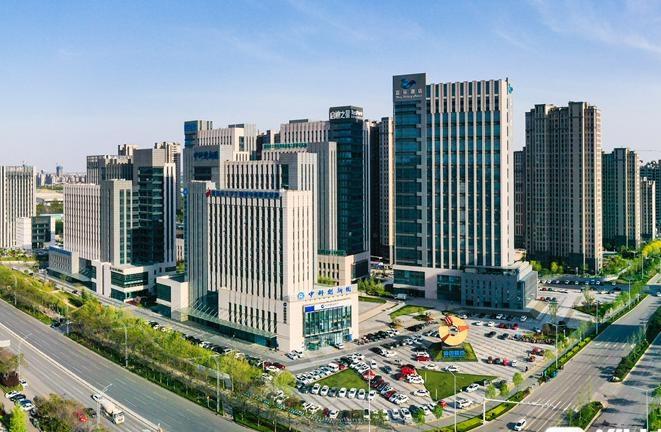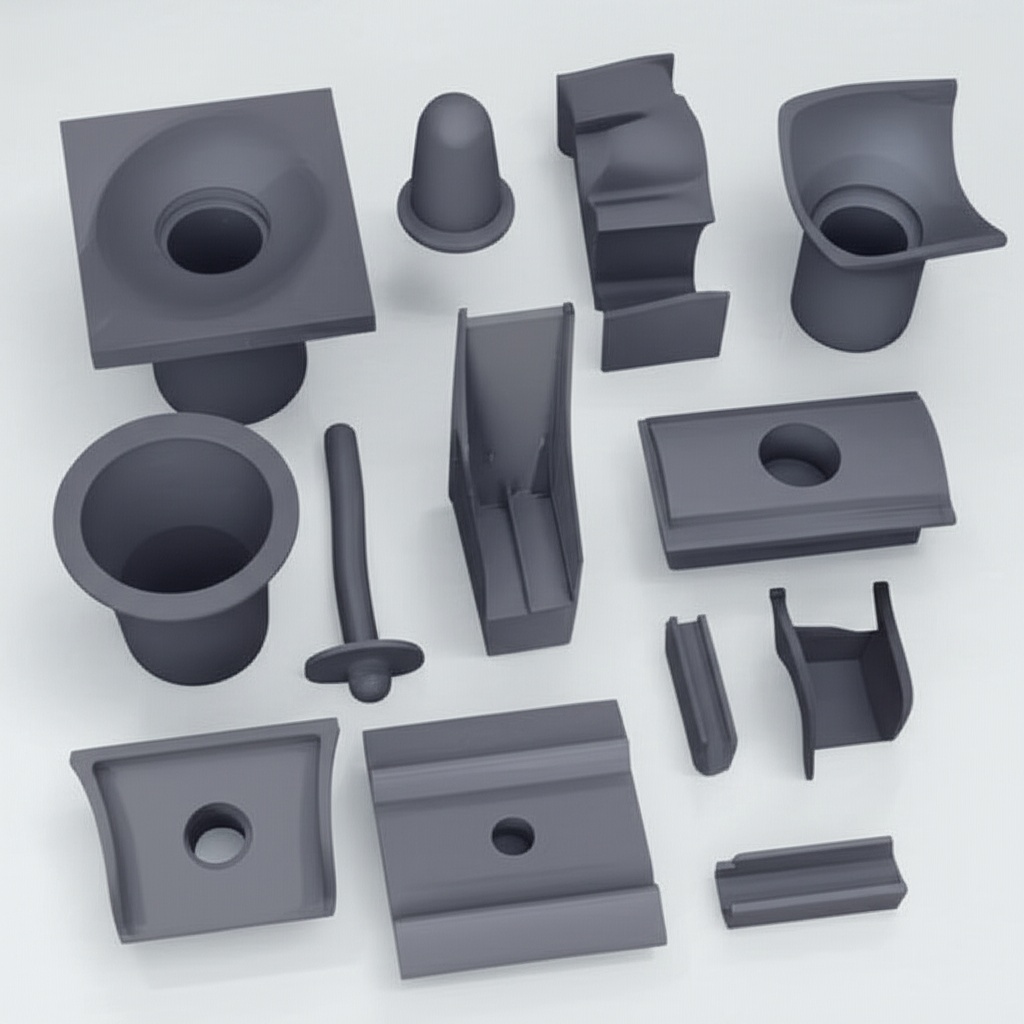11-33 kV Şebekeye Bağlı İnvertörler ve Endüstriyel Sürücüler için Orta Gerilim Silisyum Karbür Güç Modülleri (1200V-3300V)

Paylaş
Ürüne Genel Bakış ve 2025 Pazar İlgisi
1200V-3300V değerindeki orta gerilim silisyum karbür (SiC) güç modülleri, şebekeye bağlı fotovoltaik inverterlerde ve 11-33 kV dağıtım seviyelerine bağlı ağır hizmet tipi endüstriyel sürücülerde yüksek verimli dönüşüm için tasarlanmıştır. Bu modüller Pakistan'ın tekstil, çimento ve çelik sektörlerinde ısıya, toza ve şebeke dalgalanmalarına dayanıklı kompakt, sağlam güç kademeleri sağlarken olağanüstü verimlilik ve güvenilirlik sunar.
2025 yılında Pakistan'daki endüstriyel kullanıcılar, enerji maliyetlerini kontrol altına almak ve çalışma süresini iyileştirmek için orta gerilim PV ve yüksek performanslı sürücülerin benimsenmesini hızlandırıyor. SiC modülleri şunları sunar:
- 11-33 kV ile arayüz oluşturan çok seviyeli topolojilere uygun yüksek arıza kapasitesi.
- Düşük anahtarlama ve iletim kayıpları, ≥,5 inverter verimliliği sağlar.
- Manyetik boyutunu ve sistemi azaltan yüksek frekanslı çalışma (50-150 kHz) hacim 30'dan daha fazla.
- 175°C bağlantı noktasına kadar yüksek sıcaklıkta çalışma, 45°C'yi aşan ortam koşullarında kritiktir.
Önümüzdeki beş yıl içinde artan 5 GW'lık orta gerilim PV boru hattı ve 500 milyon USD'lik invertör pazarı ile uyumlu olarak, SiC'nin penetrasyonunun 2028 yılına kadar 'u aşacağı tahmin edilmektedir. Pakistan'ın voltaj düşüşleri, harmonikler ve toza maruz kalma ile karakterize edilen şebeke bağlamı için SiC modülleri, değer kaybı, bakım ve yaşam döngüsü maliyetini önemli ölçüde azaltır.

Teknik Özellikler ve Gelişmiş Özellikler
- Gerilim sınıfları: 1200V, 1700V, 2200V, 3300V cihaz seçenekleri
- Akım değerleri: Faz başına 100-800 A için ölçeklenebilir modül konfigürasyonları (uygulamaya bağlı)
- Anahtarlama frekansı: Kompakt manyetikler ve filtreler için 50-150 kHz
- Çalışma sıcaklığı: -40°C ila +175°C bağlantı
- Kayıplar: karşılaştırılabilir çalışma noktalarında silikona kıyasla - azalma
- Paketleme: Kelvin kaynağı ile düşük endüktanslı düzenler, yüksek termal iletkenlikli DBC (Si3N4/AlN)
- Koruma hazırlığı: Kısa devre dayanım süresi (tSC), termal izleme için entegre NTC, DESAT'a hazır kapı arayüzü
- Güvenilirlik: Güç döngüsü ve termal şok, 200.000 saatlik MTBF hedefleri için nitelikli
- Soğutma: Hava soğutmalı veya sıvı soğutmalı soğuk plakalar; endüstriyel sahalar için toza dayanıklı kanat geometrileri
- Uyumluluk desteği: Uygun kontrol ile entegre edildiğinde orta gerilim ara bağlantı ihtiyaçları (THD, FRT, reaktif destek) ile uyumlu tasarımlar
Orta Gerilim İnvertörleri ve Sürücüleri için Performans Karşılaştırması
Zorlu, Tozlu Ortamlar için Yüksek Verimli Modüller
| Kriter | SiC MV güç modülleri (1200V-3300V) | Geleneksel silikon IGBT modülleri |
|---|---|---|
| Tam yük verimliliği | ≥,5 inverter verimliliği | 96%-97% tipik |
| Anahtarlama frekansı | 50-150 kHz (daha küçük manyetikler) | 10-20 kHz tipik |
| Termal kapasite | -40°C ila +175°C bağlantı | -40°C ila +125°C tipik |
| Soğutma ayak izi | Yaklaşık daha küçük | Daha büyük soğutucular/fanlar |
| Sistem hacmi | > azalma | Daha büyük dolaplar |
| Harmonik azaltma | Daha küçük LCL ile düşük THD'yi karşılamak daha kolay | Daha büyük filtreler gerekli |
| Ömür Boyu/MTBF | 200.000 saate kadar uzatılmıştır | Isı/toz altında daha kısa |
Uzman Görüşü ile Temel Avantajlar ve Kanıtlanmış Faydalar
- Yüksek arıza gerilimi, çok seviyeli topolojilerde daha az seri kademe sağlayarak güvenilirliği artırır ve korumayı basitleştirir.
- Düşük anahtarlama kayıpları OPEX'i düşürerek LCOE'yi iyileştirir ve enerji tüketimini artırır.
- Yüksek frekanslı çalışma LCL filtrelerini küçülterek çatı ve inverter odası kısıtlamalarını hafifletir.
- Yüksek sıcaklık toleransı, 45°C+ ortam koşullarında değer kaybını azaltır.
Uzman bakış açısı:
"Silisyum karbür gibi geniş bant aralıklı güç cihazları, yenilenebilir enerji kaynaklarının ve endüstriyel elektrifikasyonun ölçeklendirilmesi için gereken daha yüksek verimliliğin ve termal sağlamlığın kilidini açıyor." - Uluslararası Enerji Ajansı, Güç Sistemleri Analizleri (iea.org)
"SiC'nin hızlı anahtarlama ve yüksek sıcaklıkta çalışma özelliği, özellikle ısı ve kirlenmenin geleneksel tasarımları zorladığı yerlerde kompakt, güvenilir dönüştürücüler sağlar." - IEEE Güç Elektroniği topluluğu fikir birliği (ieee.org)
Gerçek Dünya Uygulamaları ve Ölçülebilir Başarı Hikayeleri
- Endüstriyel parklarda orta gerilim PV: Belucistan'da SiC invertörlerin kullanıldığı 500 kW'lık bir pilot uygulama, ,7 işletme verimliliği ve ekipman hacminde yaklaşık azalma sağlayarak birden fazla yerel genişlemeye yol açtı.
- Tekstil tahrikleri (Punjab, Sindh): SiC tabanlı VFD güç kademeleri harmonik bozulmayı azalttı ve yoğun yaz aylarında termal kapanmaları hafifleterek dokuma ve eğirme hatlarında çalışma süresini iyileştirdi.
- Çimento fabrikaları: Fırın ID/FD fan tahrikleri, daha düşük filtre boyutu ve toz yükü altında daha soğuk çalışma gerçekleştirerek bakım aralıklarını kısalttı.
- Çelik yeniden haddeleme fabrikaları: SiC modülleri sık yük geçişlerini daha az termal stresle idare ederek bileşen ömrünü uzattı ve plansız duruşları azalttı.
Seçim ve Bakımla İlgili Hususlar
- Gerilim seçimi: Çok seviyeli inverterlerde düşük seviyeli aşamalar için 1200V-1700V; seri sayısını azaltmak için daha yüksek voltaj blokları için 2200V-3300V seçin.
- Soğutma stratejisi: Tozlu ortamlarda yüksek yoğunluklu MV rafları için sıvı soğutmalı soğuk plakalar; suyun sınırlı olduğu yerlerde toza dayanıklı hava soğutmalı kanatlar.
- Kapı sürücü ayarı: EMC ve anahtarlama kaybını dengelemek için dv/dt kontrolü ve aktif Miller kelepçesi uygulayın; DESAT koruması ve kısa devre sağlamlığı sağlayın.
- Filtreleme: 11-33 kV fiderlerde yerel THD beklentileri için LCL filtrelerini boyutlandırın; ayak izini en aza indirmek için daha yüksek anahtarlama frekansından yararlanın.
- Önleyici bakım: NTC sıcaklıklarını ve anahtarlama kaybı eğilimlerini izleyin; toz seviyelerine uygun filtre inceleme aralıkları planlayın.
Sektör Başarı Faktörleri ve Müşteri Görüşleri
- Entegrasyon öncelikli mühendislik, mevcut şalt odaları ve çatılar için güçlendirme karmaşıklığını azaltır.
- Teknoloji transferi ve yerel eğitim, devreye alma sürelerini kısaltır ve erken işletimi stabilize eder.
Müşteri geri bildirimi:
"OG PV güçlendirmemiz beklenenden daha yüksek verimlilik ve daha küçük bir ayak izi elde etti. Termal marjlar en sıcak aylar boyunca bozulmadan kaldı ve bakım çağrılarını azalttı." - Mühendislik müdürü, güney Pakistan'da endüstriyel park kurulumu
Gelecekteki Yenilikler ve Pazar Eğilimleri
- Daha yüksek voltajlı SiC kalıp yol haritaları, MV topolojilerindeki kademeli aşamaları daha da azaltacaktır.
- Gelişmiş alt tabakalar ve sinterleme süreçleri termal döngü sağlamlığını artıracaktır.
- Termal ve kullanım ömrü modellemesi için entegre dijital ikizler, kestirimci bakımı kolaylaştıracaktır.
- Yerel üretim girişimleri, artan MV talebine hizmet etmek için paketleme ve test yeteneklerini genişletecektir.
Sık Sorulan Sorular ve Uzman Yanıtları
- 11-33 kV ara bağlantılar için en iyi modül voltaj değerleri hangileridir?
1200V-1700V modüller çok seviyeli aşamalara uygunken, 2200V-3300V modüller daha yüksek voltajlı bloklardaki seri eleman sayısını azaltır. - Bu modüller yerel şebeke ara bağlantı beklentilerini karşılayabilir mi?
Evet, uygun kontroller ve LCL filtreleri ile eşleştirildiklerinde, yerel DISCO'lar tarafından kullanılan düşük THD, reaktif güç kontrolü ve geçiş davranışlarını desteklerler. - 45°C+ ortam ve tozla nasıl başa çıkıyorlar?
Yüksek sıcaklık bağlantı kabiliyeti ve düşük termal dirençli ambalaj, değer kaybını azaltır. Toza dayanıklı muhafazalar ve gerektiğinde sıvı soğutma, kararlı çalışmayı sürdürür. - Silikona kıyasla tipik verimlilik kazançları nelerdir?
Sistem verimliliği ,5'ten ,5 ve üzerine çıkabilir, güç yoğunluğu 2 kata kadar artar ve soğutma hacmi yaklaşık azalır. - Beklenen güvenilirlik nedir?
Tasarımlar, yerel koşullar altında uygun termal tasarım ve filtreleme ile 200.000 saatlik MTBF hedeflerine ulaşabilir.
Bu Çözüm Operasyonlarınız İçin Neden İşe Yarıyor?
SiC orta gerilim güç modülleri, Pakistan'ın en kritik kısıtlamalarını (ısı, toz, alan ve şebeke değişkenliği) doğrudan ele alırken, ölçülebilir performans kazanımları sağlar: ≥,5 verimlilik, 1,5-2 kat güç yoğunluğu ve 'a kadar daha küçük soğutma sistemleri. Bu özellikler yatırım getirisini artırır, riski azaltır ve 11-33 kV şebekeye bağlı PV ve endüstriyel sürücüler için uyumluluğu basitleştirir.
Özel Çözümler için Uzmanlarla Bağlantı Kurun
Ortamınıza ve hedeflerinize uygun SiC modül çözümleri tasarlamak için 10 yılı aşkın üretim uzmanlığından ve inovasyondan yararlanın:
- Hızlı özelleştirme için lider bir araştırma ekosistemi tarafından desteklenir
- R-SiC, SSiC, RBSiC, SiSiC malzemeleri ve ambalajlarında özel geliştirme
- Fizibiliteden işletmeye almaya kadar teknoloji transferi ve fabrika kurma hizmetleri
- Malzeme işlemeden bitmiş ürün entegrasyonuna kadar anahtar teslim yaklaşım
- 19'dan fazla kuruluşla ölçülebilir yatırım getirisi sağlayan kanıtlanmış geçmiş performans
Ücretsiz danışmanlık ve özel bir teknik teklif alın:
- E-posta: [email protected]
- Telefon/WhatsApp: +86 133 6536 0038
Makale Meta Verileri
Son güncelleme: 2025-09-10
Bir sonraki planlı güncelleme: 2026-01-15

About the Author: Sicarb Tech
We provide clear and reliable insights into silicon carbide materials, component manufacturing, application technologies, and global market trends. Our content reflects industry expertise, practical experience, and a commitment to helping readers understand the evolving SiC landscape.



